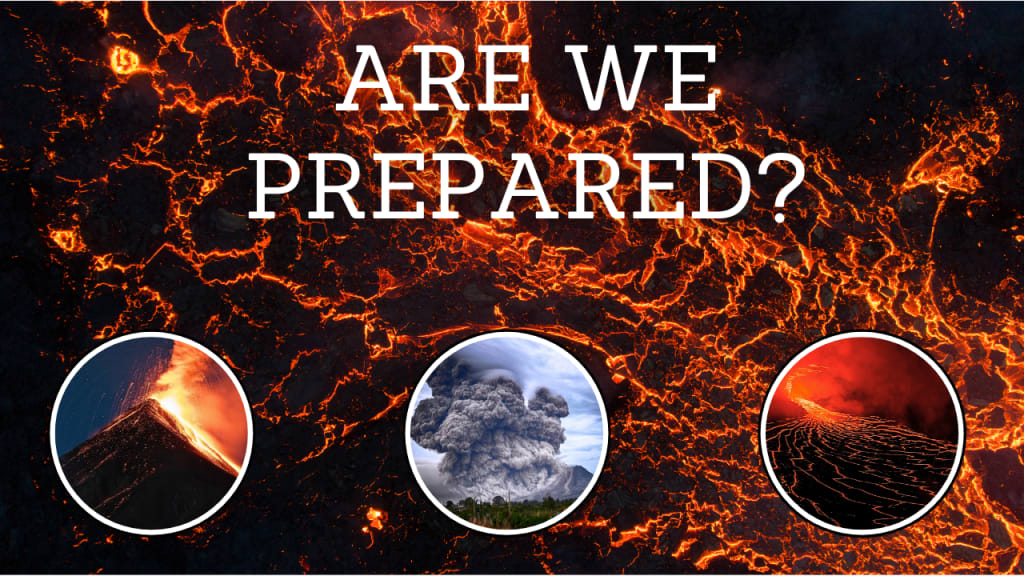
In the heart of the American West, where the rugged beauty of nature captivates the soul, lies a sleeping giant beneath the tranquil surface of Yellowstone National Park. It's a land of wonders, where powerful geysers and hot springs paint the landscape with vibrant hues, but few realize the awesome power that lies dormant beneath their feet.
You see, beneath the picturesque beauty of Yellowstone lies a secret—a secret that could spell catastrophe for the entire region. For deep beneath the earth's surface, a colossal super volcano slumbers, its presence revealed by a vast magma chamber, stretching far wider and deeper than anyone had dared to imagine.
In 2015, researchers made a startling discovery: there wasn't just one magma reservoir beneath Yellowstone, but two—one atop the other, like layers of a geological cake. Together, these reservoirs held a staggering amount of magma, enough to fill the Grand Canyon not once, but eleven times over. It was a revelation that sent shockwaves through the scientific community and set alarm bells ringing for those who understood the implications.
You see, super volcanoes like Yellowstone have a tendency to flex their muscles, exerting immense pressure on the land above as they stir from their slumber. And Yellowstone, with its status as an active volcano, is no exception. It inches upward, imperceptibly to the casual observer, rising one to two inches each year—a silent reminder of the titanic forces at play beneath the earth's surface.
But what does this all mean for those who call Yellowstone home, or for the millions of visitors who flock to its natural wonders each year? Should they fear the rumblings beneath their feet, or can they rest easy, secure in the knowledge that the volcano will remain dormant for the foreseeable future?
In March of 2023, the earth stirred beneath Yellowstone's tranquil facade, as a swarm of earthquakes rattled the region. Over three hundred and fifty tremors rippled through the earth, yet the most powerful among them barely registered on the Richter scale—a mere 3.7, a minor tremor in the grand scheme of things. And while experts noted the increased seismic activity with interest, they were quick to reassure the public that there was no cause for alarm.
Michael Poland, a geophysicist at the Yellowstone Volcano Observatory, offered reassurance that Yellowstone remained stable. While the earth may grumble and groan from time to time, there was no imminent threat of eruption. For a super eruption to occur, conditions must align perfectly: ample magma must lie in wait beneath the surface, and enough pressure must build to force it upwards. And as of now, those conditions simply did not exist.
Yet, even as they offered reassurance, scientists remained vigilant, monitoring Yellowstone's every move for signs of trouble. They watched for the telltale signs of an impending eruption—increased seismic activity, ground deformation, changes in temperature and geyser activity—anything that might hint at the volcano's awakening.
For Yellowstone is no stranger to cataclysmic eruptions. In its long and tumultuous history, it has unleashed its fury upon the land not once, but three times, in events so powerful they reshaped the very landscape. The most recent of these eruptions, the Lava Creek eruption, occurred some 640,000 years ago, blanketing the region in a thick layer of ash and leaving behind the iconic Yellowstone Caldera.
But what would happen if Yellowstone were to awaken once more? If the sleeping giant were to stir from its slumber and unleash its fury upon the world? The consequences would be catastrophic, far-reaching, and unimaginable.
In the days leading up to the eruption, warning signs would appear—earthquakes growing more frequent and intense, the ground growing warmer, geothermal pools and geysers becoming increasingly volatile. And then, with a deafening roar, the volcano would awaken, hurling a massive column of lava and ash into the sky.
A pyroclastic flow, a deadly mix of molten rock and volcanic ash, would race across the landscape at terrifying speed, leaving devastation in its wake. Thick clouds of ash would blot out the sun, plunging the world into darkness and ushering in a nuclear winter that would last for years.
Entire ecosystems would collapse under the weight of the ash, and crops would wither and die, leading to famine and starvation on a global scale. It would be a disaster unlike any the world has ever seen, a catastrophe that would leave no corner of the globe untouched.
Yet, for now, Yellowstone slumbers on, its secrets hidden beneath the earth's surface, its power held in check by the forces of nature. And so, we watch and wait, knowing that one day, the sleeping giant may awaken once more, and the world will tremble at its fury. But until that day comes, we cherish the beauty of Yellowstone, and marvel at the wonders of the natural world, knowing that beneath its serene exterior lies a power beyond comprehension.
About the Creator
Paula R
Hi! I am delighted in the art of storytelling, I dreamed of bringing imaginations to life through my writing, turning childhood dreams into captivating tales and be amazed by the wonders of the world, world trivia, or mysteries.






Comments
There are no comments for this story
Be the first to respond and start the conversation.